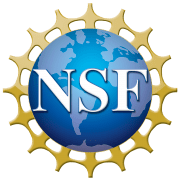The Hub is excited to host you as a participant for Adelante! Review the agenda below for information on the conference. Visit the conference home page to find submission guidelines, the participant code of conduct, release, and more!
All conference participants agree to the participation policy, code of conduct, and release outlined here. These policies are subject to change at the discretion of the Hub.
Welcome to the Conference
Food
- Thursday: The welcome reception will include hors d’oeuvres and drinks.
- Friday: Breakfast, Lunch, and Dinner buffets are included.
- Saturday: Breakfast, Lunch, and Dinner buffets are included.
- Sunday: There will be a closing brunch included.
Lodging
Lodging will be at the Sheraton Uptown in Albuquerque, NM.
Dress Code
There is no formal dress code for Adelante! but dress comfortably and professionally. Attire and adornments that celebrate individuals’ culture and heritage are encouraged.
Photo Release
By registering for NSF HSI National STEM Resource Hub Capstone Conference: Adelante!, you agree to allow the Hub to use any photos or video recordings taken of you during the conference in news media, websites, publications, articles, marketing pieces etc. If you have any questions about this policy, please contact us at [email protected].
Conference Participant Code of Conduct
Please review the participant code of conduct, linked above.
Submission Guidelines
For those submitting prospects to the conference, please adhere to the following guidelines.
Poster Presentations
Date & Venue
- Presenters are expected to present their posters during dedicated presentation session. The exact location of each poster presentation will be listed in the final program. The poster may include printed materials, tables, graphs, photographs, or illustrations. All the materials should be of sufficient size so they can be easily read at a reasonable distance of 1 to 1.5 meters by the participants.
Your poster should include:
- The paper title and all authors at the top of the poster
- A brief introduction, goals, experimental detail, conclusions, and references; presented in a logical and clear sequence
- Explanations for each graph, picture, and table
Size, fonts, and color
- We accept posters of any size but prefer a maximum of 42 by 42. Vertical 36″ (86.36 cm) wide x 44″ (111.76 cm) high is ideal. This is a portrait/vertical format.
- Visual Design: Pay attention to the overall layout and design of your poster. Use clear headings, consistent formatting, and a visually appealing high contrast color scheme to make your poster that is accessible, easy to read and visually appealing.
- Title: 36 point type
- List of authors: 25 point type
- Body copy should be double-spaced text: 15 point type
- Engagement Elements: Consider incorporating interactive elements such as QR codes, multimedia content, or interactive demonstrations to engage viewers and encourage further discussio
- Review poster for accessibility using the ppt accessibility checker. Reference: Accessible Posters (use Accessibility Checker): https://guides.library.yale.edu/academic-poster-resources/accessibility
Lightning Talks
Preparing a lightning talk can be challenging. Here are some suggestions to help you craft an engaging and concise presentation:
1. Choose a Topic: Your presentation should align with the conference theme: Building Capacity for STEM Student Success at HSIs. Make sure it is something you can cover effectively in just three minutes. Presentations that show impact of NSF funded projects, institutional student and faculty support programs, and faculty recruitment/retention/developmental practices are most welcome.
2. Outline Your Key Points: Create a clear outline with the main points you want to cover. Limit yourself to the most important ideas to fit within the time constraint.
3. Focus on a Single Message: Keep your talk focused on one central message or takeaway. Trying to cover too much ground in a short time can confuse your audience.
4. Use Visual Aids Sparingly: If appropriate, include simple visual aids like slides or props to enhance your presentation. However, avoid overloading your slides with text or complicated graphics.
5. Add a Summative Closing: End your talk with a closing statement that reinforces the connections between your message and the impact and relevance for student success at HSIs. Contact information and a QR code that provides links to your program page, LinkedIn page, or other resources helps the audience stay connected after your talk.
6. Practice: Time yourself as you rehearse your talk to ensure you can deliver it comfortably within the three-minute limit.
7. Reduce and Edit: You are limited to 3 minutes and 3 slides maximum. As you rehearse, be prepared to make cuts to ensure your talk stays within the time limit. Focus on keeping the most essential information.
8. Review talk for accessibility using the ppt accessibility checker. Reference: Accessible Posters (use Accessibility Checker): https://www.cdc.gov/nchs/creating-accessible-ppt-presentation.pdf
9. Convert your presentation to PDF.
Executive Summaries
guidelines forthcoming
Table Moderators
Table moderators will facilitate table group discussions at designated times. Moderators will assign a scribe and ensure adequate notes are taken to document insights and consensus thoughts from the table.
Things to remember:
- You are there to encourage conversation, not dominate it.
- You should ensure all voices are heard in the group.
- Be mindful of time and keep discussions on task.
Updated on: 3/15/24

